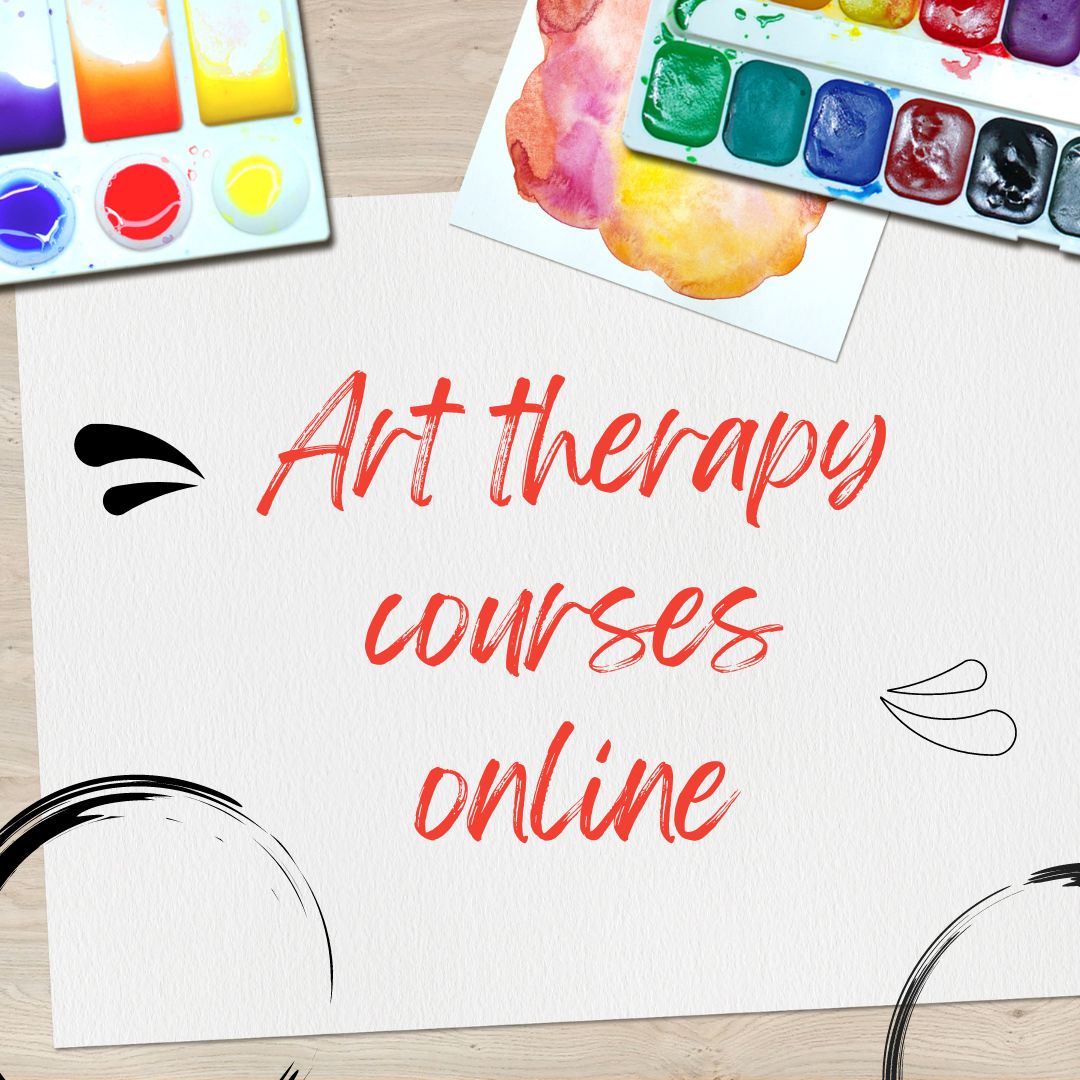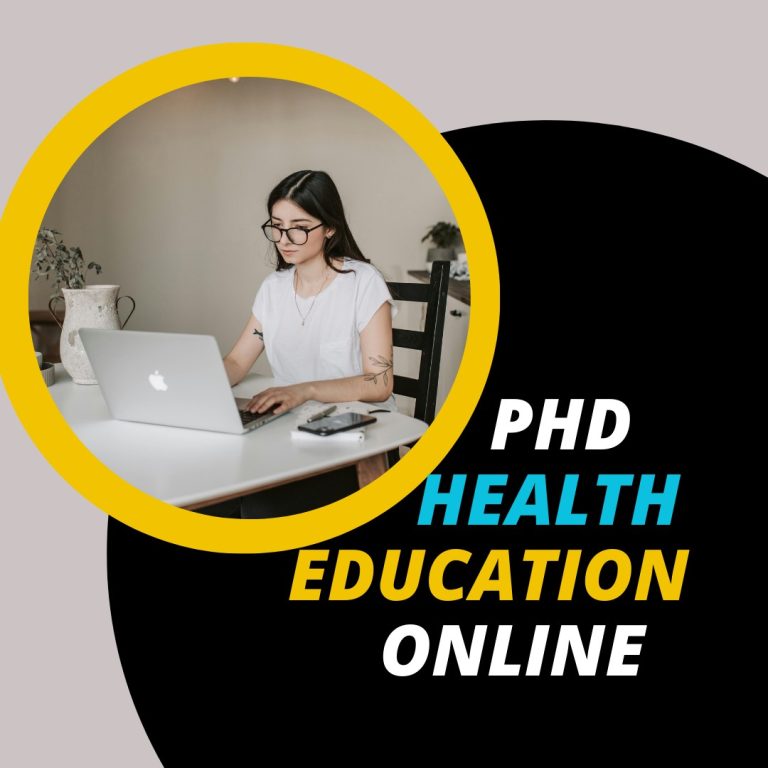Art Therapy Courses Online for Learning Higher Skill
Art therapy courses online offer flexible learning for individuals interested in using art for therapeutic purposes. These courses cover various techniques and theories.
Art therapy combines creative processes with psychological theories to promote mental health and well-being. Online courses provide flexibility, allowing students to learn at their own pace from anywhere. They typically cover topics like art techniques, therapeutic practices, and ethical considerations.
Students gain skills to help others express emotions and resolve issues through art. These courses are ideal for aspiring art therapists or those looking to integrate art into their existing practice. By enrolling in online art therapy courses, individuals can enhance their knowledge and make a positive impact on mental health.
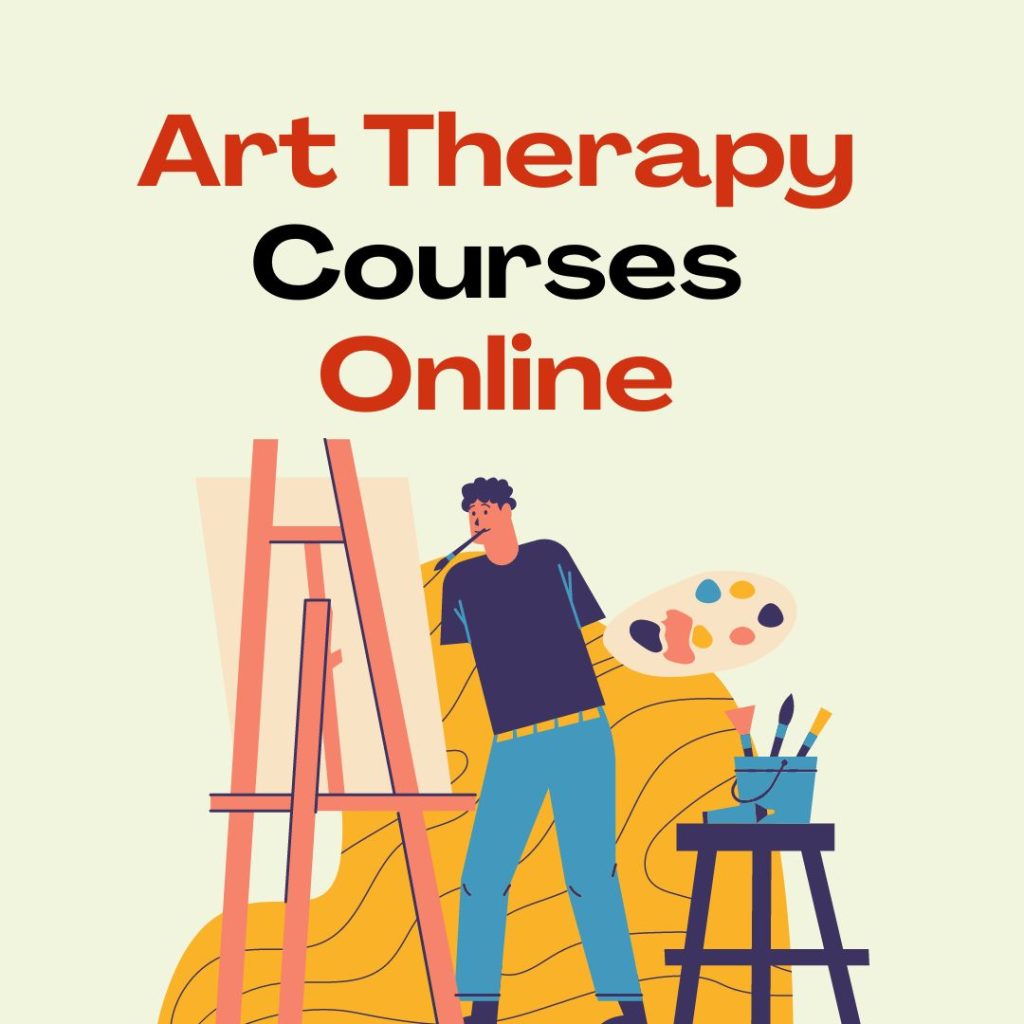
The Essence Of Art Therapy
Art therapy is a form of expressive therapy that uses the creative process of making art to improve a person’s physical, mental, and emotional well-being. By delving into their creative side, individuals can explore feelings, reconcile emotional conflicts, and foster self-awareness. Art therapy courses online provide an accessible way to harness the power of creativity for healing and personal growth.
Healing Through Creativity
Engaging in art-making allows individuals to express themselves in ways words cannot. This creative outlet can help alleviate stress, reduce anxiety, and boost self-esteem. Through drawing, painting, or sculpting, people can release bottled-up emotions and find a sense of peace. Art therapy encourages self-expression and helps people cope with life’s challenges.
- Drawing: Helps individuals visualize their thoughts and emotions.
- Painting: Provides a calming effect and reduces stress.
- Sculpting: Offers tactile engagement, grounding the person in the present moment.
The Science Behind Art As Therapy
Art therapy is grounded in psychological theories and practices. Studies have shown that engaging in creative activities can trigger the brain’s reward system, releasing dopamine. This helps in enhancing mood and reducing symptoms of depression. Art therapy also activates the brain’s right hemisphere, responsible for visual and spatial processing, which can lead to new insights and perspectives.
Key Benefits of Art Therapy:
- Improves mental health by reducing anxiety and depression.
- Enhances emotional resilience and self-awareness.
- Promotes relaxation and reduces stress levels.
- Fosters social skills through collaborative art projects.
| Activity | Benefit |
|---|---|
| Drawing | Visualizes thoughts and emotions. |
| Painting | Calms the mind and reduces stress. |
| Sculpting | Grounds the person in the present moment. |
Online art therapy courses provide flexible access to these benefits. These courses offer structured programs that guide individuals through various artistic techniques. This makes art therapy accessible to everyone, regardless of their location.
Navigating Online Art Therapy Courses
Exploring online art therapy courses can be both exciting and overwhelming. With numerous options available, it’s crucial to choose the right course that fits your needs and goals. Let’s dive into some key aspects to consider while navigating these courses.
Finding The Right Program
First, identify your goals. Are you aiming to become a certified art therapist, or do you want to explore art therapy for personal growth? Understanding your objectives will help in selecting a suitable program.
Research the course content thoroughly. Look for programs that cover essential topics such as therapeutic techniques, art materials, and psychological theories. A well-rounded curriculum ensures you gain comprehensive knowledge.
Check the credentials of the instructors. Experienced and qualified teachers can provide valuable insights and guidance. Their expertise will enhance your learning experience.
| Criteria | Details |
|---|---|
| Goals | Certification or Personal Growth |
| Course Content | Therapeutic Techniques, Art Materials, Psychological Theories |
| Instructors | Experienced and Qualified |
Self-paced Vs. Structured Courses
Self-paced courses offer flexibility. You can study at your own speed, making it easier to balance with other commitments. This option is ideal for those with busy schedules.
Structured courses provide a more organized learning experience. They have set deadlines and regular interactions with instructors and peers. This format can help in staying motivated and on track.
- Self-Paced Courses: Flexible, suitable for busy schedules.
- Structured Courses: Organized, with deadlines and interactions.
Consider your learning style and availability when choosing between self-paced and structured courses. Each has its own set of benefits tailored to different needs.
Core Components Of Art Therapy Training
Art therapy courses online offer a unique blend of creative expression and mental health support. These courses equip students with essential skills to guide others through therapeutic art-making. Understanding the core components of art therapy training is crucial. This knowledge ensures effective and meaningful therapeutic sessions.
Understanding Materials And Mediums
Art therapy uses various materials and mediums. Each material offers different benefits and experiences. Students learn how to choose the right material for each client. Common materials include:
- Paints: Acrylic, watercolour, and oil paints.
- Clays: Air-dry and kiln-fired clays.
- Pencils: Graphite, coloured, and charcoal pencils.
- Markers: Permanent, washable, and dry-erase markers.
- Collage materials: Magazines, newspapers, and fabrics.
Each medium has unique properties. For example, paints can be fluid or textured. Clays can be molded and provide a tactile experience. Pencils allow for fine detail work. Markers offer bold colors. Collage materials foster creativity through assembling.
Psychological Principles In Art Therapy
Art therapy integrates key psychological principles. Understanding these principles is vital. They help therapists interpret and guide the creative process. Important psychological principles include:
- Expression: Art allows clients to express feelings non-verbally.
- Projection: Clients project their inner thoughts onto their artwork.
- Symbolism: Symbols in art can reveal subconscious thoughts.
- Mindfulness: Creating art promotes a state of mindfulness and relaxation.
- Problem-Solving: Art-making can help clients explore solutions to issues.
Art therapy helps clients explore their emotions. Expression through art can be less intimidating than talking. Projection allows therapists to understand deeper issues. Symbolism in art provides insights into the client’s mind. Mindfulness in creating art reduces stress. Problem-solving through art encourages new perspectives.
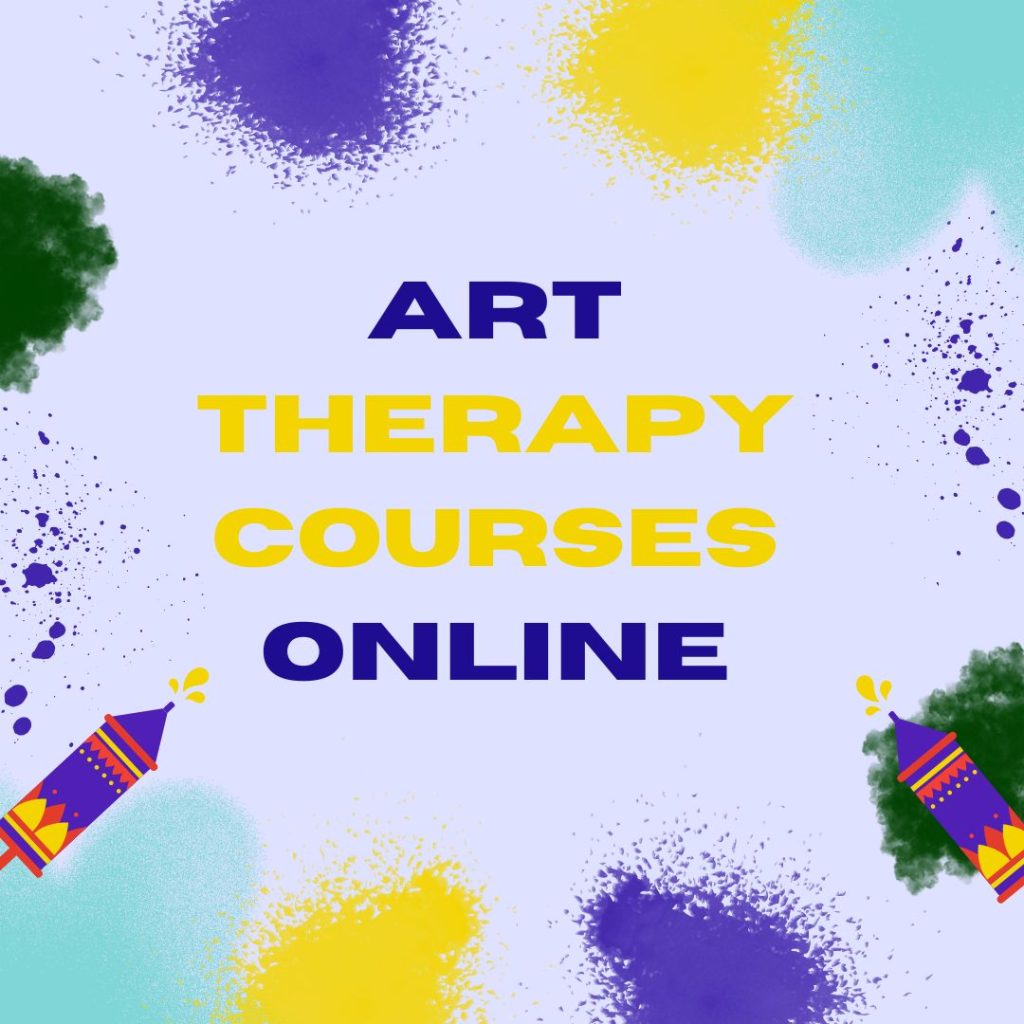
Connecting With Your Inner Artist
Discovering your inner artist can be a life-changing experience. Art therapy courses online offer a convenient way to tap into this creative potential. These courses help you explore personal expression and overcome creative blocks. Engaging with art can be therapeutic and fulfilling. Let’s dive into how these courses help you connect with your inner artist.
Exploring Personal Expression
Personal expression through art is a powerful tool. Art therapy courses guide you to express your feelings and thoughts visually. You can use colors, shapes, and textures to communicate your emotions. This process can lead to self-discovery and healing.
Many courses offer a variety of mediums:
- Painting
- Drawing
- Sculpting
- Collage
Each medium allows for unique forms of expression. You can choose the one that resonates with you. As you progress, you’ll find new ways to articulate your inner world.
Overcoming Creative Blocks
Creative blocks can be frustrating. Art therapy courses provide tools to overcome these obstacles. Techniques like mindfulness and guided meditation can help clear mental clutter. These practices make room for creativity to flow.
Some common strategies include:
- Free drawing exercises
- Journaling your thoughts
- Using prompts and themes
These methods can help you break through creative barriers. They encourage a free and open mindset. Over time, you’ll learn to trust your artistic instincts again.
The Therapeutic Art Studio Setup
Setting up a therapeutic art studio at home can be a transformative experience. This space should inspire creativity and foster emotional healing. Whether you’re a beginner or an experienced artist, a well-planned art studio can enhance your art therapy journey.
Crafting Your Creative Space
Creating a dedicated art space is essential. Choose a quiet corner with good lighting. Natural light is ideal, but a bright lamp works too. Ensure the area is free from distractions.
Organize your supplies efficiently. Use shelves, bins, and drawers to store your materials. Label everything clearly to find what you need quickly. A clutter-free space promotes a calm mind.
- Comfortable seating: Choose a chair that supports your back.
- Work surface: A sturdy table or desk is a must.
- Inspirational items: Add plants, artwork, or quotes that inspire you.
Make your space personal. Add elements that reflect your personality and artistic style. This can include colors, textures, and decor that make you feel at home.
Virtual Art Studio Tours
Taking a virtual tour of other artists’ studios can offer inspiration and ideas. Many artists share their setups online, providing valuable insights.
Explore various virtual art studio tours through video platforms and social media. Notice how they organize their spaces and what materials they use.
- Search for studio tours on YouTube.
- Join art therapy forums and groups on social media.
- Attend online workshops that offer virtual studio tours.
These tours can inspire you to enhance your own space. They also provide a sense of community, connecting you with like-minded individuals.
| Resource | Description |
|---|---|
| YouTube | Find a variety of virtual studio tours. |
| Social Media | Join groups for tips and inspiration. |
| Online Workshops | Learn from experienced art therapists. |
By exploring these resources, you can create a therapeutic art studio that meets your needs and fuels your creativity.
Integrating Techniques And Approaches
Art therapy courses online provide a unique way to blend various techniques and approaches. Students gain an understanding of how to use art for healing. The courses focus on both traditional and modern methods. They adapt these methods for an online setting. This makes art therapy more accessible to everyone.
Blending Art Forms
Art therapy courses online often mix different art forms. This includes painting, drawing, and sculpture. Students explore how these forms can be combined. They learn to use these combinations for emotional expression. This blending helps to create a more holistic approach to therapy.
| Art Form | Benefits |
|---|---|
| Painting | Encourages creativity and relaxation |
| Drawing | Helps with focus and fine motor skills |
| Sculpture | Provides a tactile experience and emotional release |
Adapting Traditional Methods For Online
Traditional art therapy methods are adapted for online courses. This includes techniques like guided imagery and mindfulness. Instructors use video calls and digital tools. This allows students to practice these methods at home. Online platforms also offer interactive features.
- Video demonstrations – Visual guides for techniques
- Live sessions – Real-time interaction with instructors
- Discussion forums – Peer support and feedback
These features make learning interactive and engaging. Students can practice in their own time. They also receive feedback from instructors. This enhances their learning experience.
Real-world Applications Of Art Therapy
Art therapy is not only a creative outlet but also a practical tool in various settings. From hospitals to schools, art therapy offers numerous real-world applications. These applications help individuals express emotions, reduce stress, and improve mental health.
Case Studies
Art therapy has proven effective in numerous case studies. Here are a few examples:
| Case Study | Outcome |
|---|---|
| Children with Autism | Improved communication and social skills |
| Veterans with PTSD | Reduced symptoms and increased emotional expression |
| Patients with Chronic Illness | Lowered stress and improved overall well-being |
These studies show how versatile and effective art therapy can be. Whether it’s helping children, veterans, or patients, the results are promising.
Community Projects And Collaboration
Art therapy extends beyond individual sessions. It has a significant impact on communities as well. Various community projects and collaborations leverage art therapy to bring people together and foster a sense of belonging.
- Mural Projects: Communities create murals that tell their stories and share their experiences.
- Workshops: Group workshops offer a space for collective healing and creativity.
- Public Exhibitions: Public art shows allow individuals to showcase their work and connect with others.
These projects not only benefit participants but also enhance the community spirit. They provide a platform for people to connect, share, and heal collectively.
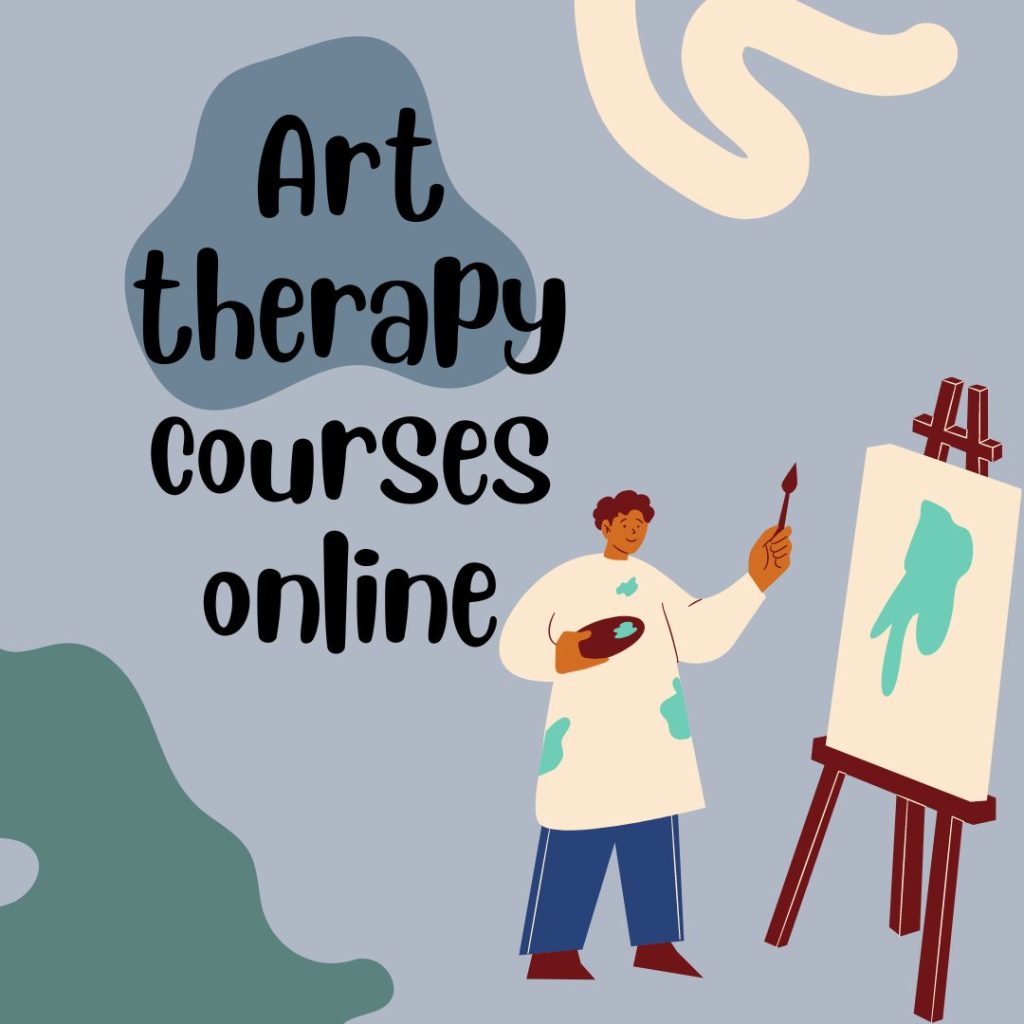
Career Paths And Professional Development
Art therapy courses online offer a range of career paths and professional development opportunities. These courses can lead to rewarding careers in mental health, education, and community services. Understanding the certifications and accreditations, and how to build a portfolio, is essential for success.
Certifications And Accreditations
Obtaining the right certifications and accreditations is crucial for a career in art therapy. Most employers look for professionals with recognized credentials. Here are some key certifications:
- Registered Art Therapist (ATR)
- Board Certified Art Therapist (ATR-BC)
- Licensed Professional Counselor (LPC)
These certifications require completion of accredited courses and supervised hours. Accredited programs ensure you meet industry standards and are prepared for professional practice.
Building A Portfolio
A strong portfolio showcases your skills and experience. It is a vital tool for career advancement. Here are some tips for building an impressive portfolio:
- Include a variety of work samples: Show different techniques and mediums.
- Document your process: Include sketches, drafts, and final pieces.
- Highlight your best work: Focus on quality over quantity.
- Add client testimonials: Share positive feedback from clients.
Use high-quality images and clear descriptions. Your portfolio should reflect your unique style and professional competence.
Consider creating both digital and physical versions of your portfolio. This allows you to present your work in different contexts.
| Certification | Requirements |
|---|---|
| Registered Art Therapist (ATR) | Master’s degree, supervised experience |
| Board Certified Art Therapist (ATR-BC) | ATR credential, passing board exam |
| Licensed Professional Counselor (LPC) | Master’s degree, supervised experience, passing licensure exam |
Staying Inspired And Motivated
Engaging in art therapy courses online can be both exciting and challenging. Staying inspired and motivated is key to success. Here are some effective ways to keep your creative juices flowing.
Continuing Education
Enrolling in continuing education programs ensures you always learn new techniques. This keeps your skills updated and fresh. Many online platforms offer advanced courses. These courses help you dive deeper into specialized areas.
Webinars, workshops, and tutorials are excellent resources. They provide both theoretical and practical knowledge. Make a habit of attending these regularly. It helps in staying ahead in your field.
Here’s a quick look at some ways to continue your education:
| Resource | Description |
|---|---|
| Webinars | Live sessions with experts |
| Workshops | Hands-on practice and feedback |
| Tutorials | Step-by-step guides |
Joining Online Art Communities
Becoming a part of online art communities can be incredibly motivating. These communities offer support and encouragement. You can share your work and get feedback. This helps in improving your skills. There are various types of online communities:
- Forums
- Social Media Groups
- Online Galleries
In forums, you can ask questions and share experiences. Social media groups are great for instant feedback. Online galleries allow you to showcase your work. Engaging with other artists keeps you inspired.
Consider these benefits of joining art communities:
- Networking with like-minded individuals
- Receiving constructive criticism
- Finding new inspiration from others’ work
The Impact Of Art Therapy On Mental Health
Art therapy can have a profound impact on mental health. It helps people express feelings and thoughts through creative processes. This method is especially effective for those who find it hard to verbalize emotions. Art therapy can lead to significant improvements in mental well-being.
Personal Growth
Engaging in art therapy courses online can lead to personal growth. These courses offer tools for self-discovery and emotional healing. Participants often find new ways to understand themselves.
Creating art can help individuals uncover hidden aspects of their personality. This process can be empowering and transformative. Art therapy encourages people to explore their inner world.
Art therapy also promotes self-awareness. It helps people identify and manage stress. This can result in a more balanced and fulfilling life.
Art Therapy Success Stories
Many people have experienced remarkable changes through art therapy. Here are a few success stories that highlight its impact:
- Anna: Struggled with anxiety. She found relief and a new passion for painting. Her artwork now inspires others.
- James: Battled depression for years. Art therapy helped him express his feelings. He now enjoys a happier and more stable life.
- Maria: A survivor of trauma. Art therapy provided her with a safe space to heal. She has regained her sense of self.
These stories show how art therapy can change lives. Each person found a unique way to heal and grow.
Art therapy courses online offer accessible and flexible options. They allow people to benefit from this powerful tool.
Frequently Asked Questions
What Is The Best Certification For Art Therapy?
The best certification for art therapy is the Registered Art Therapist (ATR) credential. It is recognized by the Art Therapy Credentials Board (ATCB).
Is An Art Therapy Certificate Worth It?
Yes, an art therapy certificate can enhance career prospects. It offers specialized skills and credibility in therapeutic arts.
Can Art Therapy Be Done Online?
Yes, art therapy can be done online. Virtual sessions offer flexibility and accessibility, making it easy to connect with therapists.
How To Start Art Therapy?
Begin art therapy by finding a certified art therapist. Gather basic art supplies like paper, pencils, and paint. Create a comfortable, quiet space. Start with simple exercises, like drawing emotions or creating a collage. Regular practice enhances the therapeutic benefits.
Conclusion
Embarking on art therapy courses online can transform your life. These courses offer flexibility and accessible learning. Enhance your skills and boost your mental well-being. Discover new techniques and connect with like-minded individuals. Start your journey today and unlock your creative potential with online art therapy courses.

